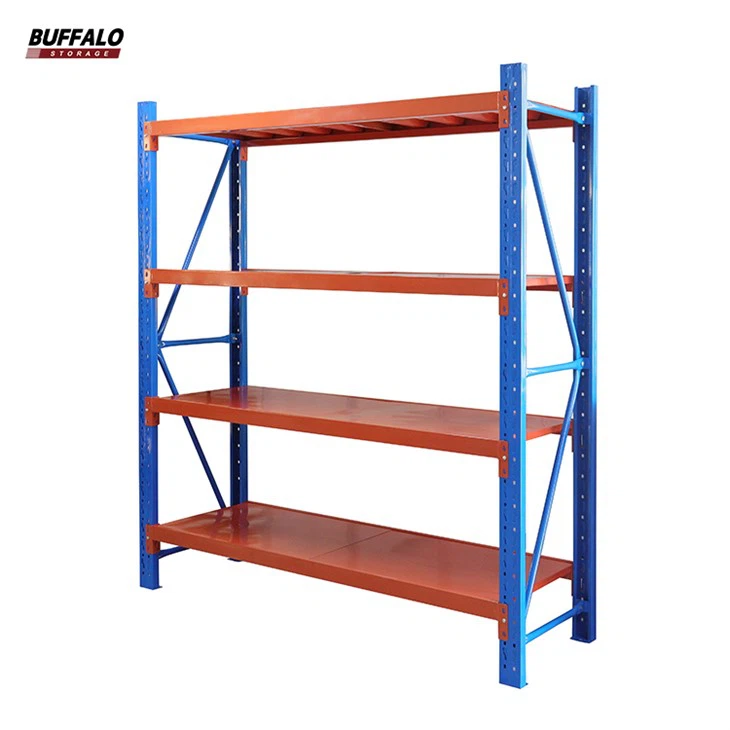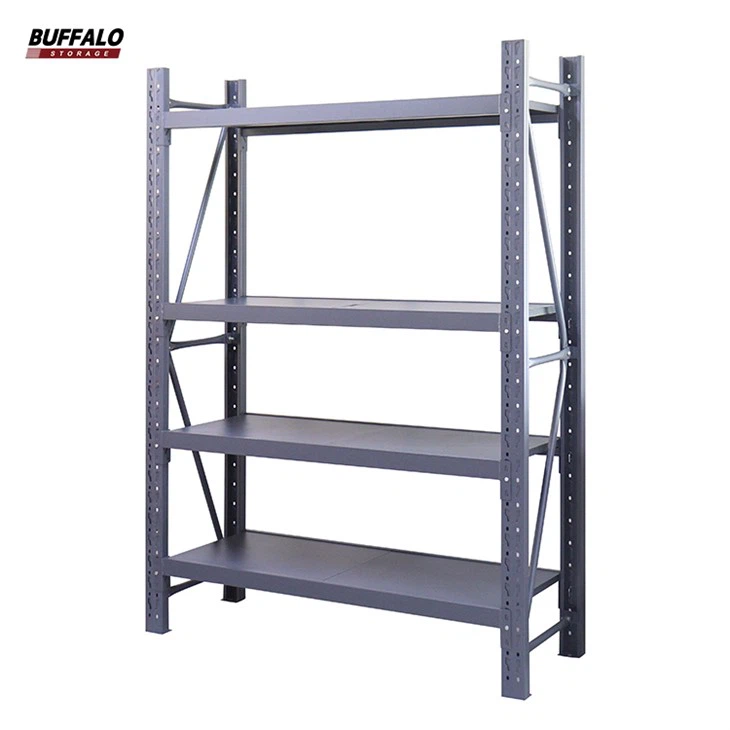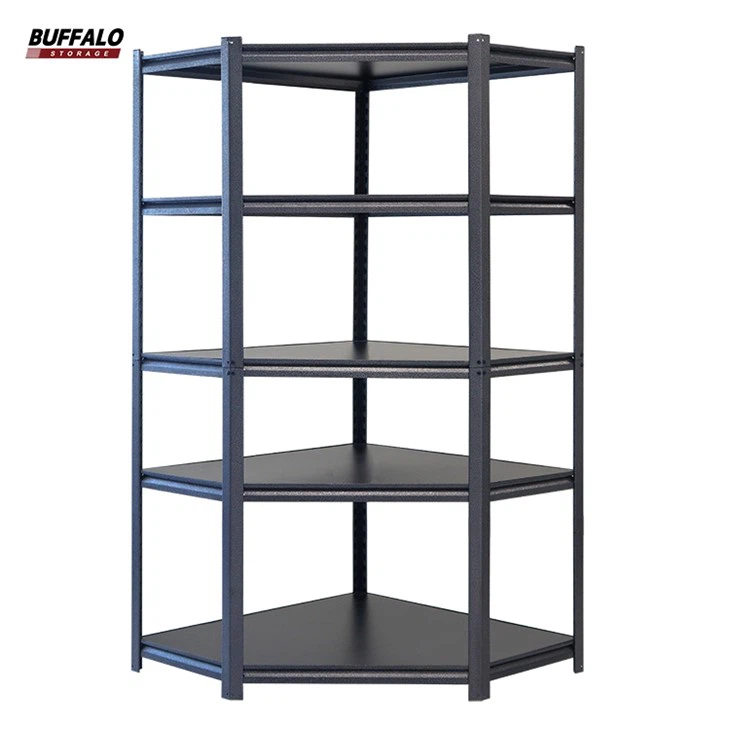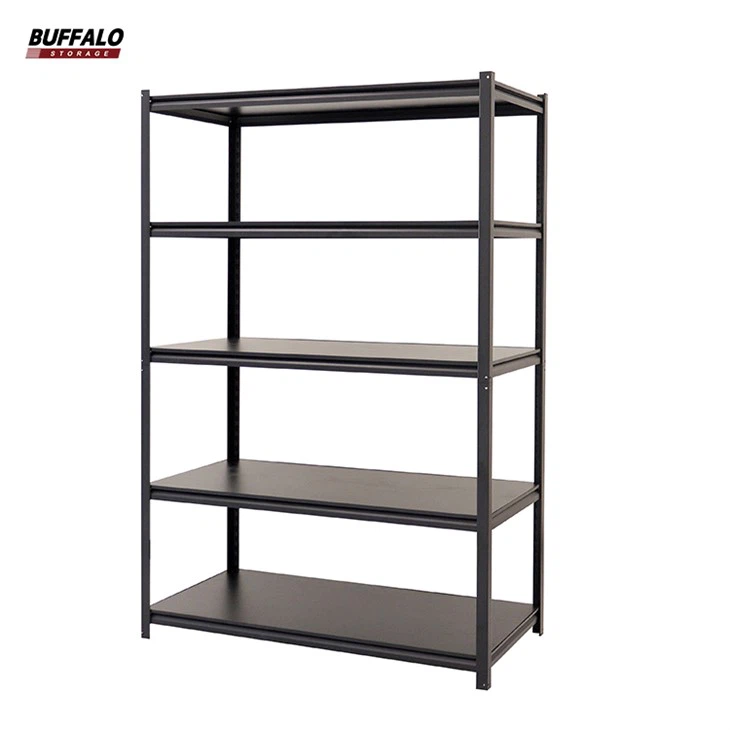Table of Contents:
1. Choose the Right Shelving
2. Load Distribution Techniques
3. Safety Precautions
4. Organizing Heavy Items
5. Maintenance and Inspections
6. Training and Best Practices
1. Choose the Right Shelving
Heavy Duty Shelving Selection
Selecting the appropriate shelving is the foundation of storing heavy items safely. For heavy loads, opt for heavy-duty shelving made of high-gauge steel. This material offers superior strength and durability, ensuring that the shelves can support significant weight without bending or collapsing. Boltless rivet shelving is an excellent option due to its high load-bearing capacity and ease of assembly .
2. Load Distribution Techniques
-Bottom-Heavy Storage
Ensure that the heaviest items are always stored on the lowest shelves. This lowers the center of gravity, reducing the risk of the shelving unit tipping over. Additionally, it makes it easier and safer to retrieve heavy items without the need for extensive lifting equipment .
-Even Weight Distribution
Distribute the weight evenly across the shelves. Avoid placing all heavy items on one side, which can cause the shelving to lean or collapse. Use load-bearing calculations to determine the maximum weight each shelf can handle and never exceed these limits.
3. Safety Precautions
-Install Safety Guards
Safety guards and panels can prevent items from falling off the shelves. These are particularly useful for high shelves or areas where heavy items are stored infrequently. They provide an extra layer of protection against accidents caused by items shifting or being knocked over.
-Secure Shelving Units
Ensure that all shelving units are securely bolted to the floor and, if possible, to the walls. This adds stability and prevents tipping, especially in areas prone to seismic activity or heavy foot traffic.
4. Organizing Heavy Items
-Labeling and Signage
Clearly label all heavy items and their designated storage locations. Use large, visible signs indicating weight limits and safe handling instructions. This helps employees quickly identify heavy items and understand the precautions needed when moving them .
-Accessible Storage Layout
Arrange your storage layout so that heavy items are easily accessible without the need for employees to reach above shoulder height or below knee level. This ergonomic consideration reduces the risk of strain and injury .
5. Maintenance and Inspections
-Regular Inspections
Conduct regular inspections of your shelving units to check for signs of wear and tear, such as rust, bending, or loose bolts. Immediate maintenance or replacement of damaged components is crucial to maintaining a safe storage environment .
-Weight Capacity Monitoring
Frequently review the weight of stored items and ensure they comply with the shelving unit’s capacity. Overloading shelves can cause gradual damage and sudden failure, leading to potentially dangerous situations.
6. Training and Best Practices
-Employee Training
Training employees on proper lifting techniques and the correct use of shelving equipment is essential. Teach them to lift with their legs, not their backs, and to use mechanical aids like pallet jacks or dollies for very heavy items .
-Safe Handling Procedures
Create and implement safety protocols customized to your unique operational needs. This includes guidelines for stacking heavy items, using equipment like forklifts safely, and understanding the load limits of each shelving unit .
Conclusion
Proper storage of heavy items on shelving involves a combination of choosing the right equipment, implementing safety measures, and maintaining an organized system. By following these guidelines, you can create a safer, more efficient warehouse environment that minimizes the risk of accidents and maximizes productivity.





